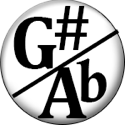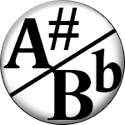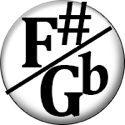Improv with Descending Sub-V Chords
Introduction
In this improvisation lesson, we’ll play a chord progression that uses substitute dominant chords to create a descending resolution.
The Chord Forms
The chords that appear in this improvisation are based on the substitute dominant patterns available in the fretboard section of this site. It would be very useful to review those chord forms before proceeding.
The Theory Behind It
It would be extraordinarily useful to understand the principles of music theory supporting the construction and use of tritone substitution chords (also known as substitute dominant chords). If you‘re not familiar with these chords and how they work, please review before continuing.
The Chord Progression

Materials to Use
The diatonic chords are well-suited to the E major scale. A simple way of playing over the substitute dominant chords would be to use a whole-tone scale from the root.
E Major Scale
(Example) D Whole-Tone Scale
Backing Track
When you’re ready, play along with the track.
Exercises
- Play the chords along with the track.
- Discover how to play whole tone patterns for each of the dominant 7♭5 chords. Play these along with the track.
- Develop a melody the flows through and connects all of the chords in the track.
- Improvise using E major scale for all chords, except for the dominant7 ♭5 chords, which will take a whole tone scale.
 As the creator of Hub Guitar, Grey has compiled hundreds of guitar lessons, written several books, and filmed hundreds of video lessons. He teaches private lessons in his Boston studio, as well as via video chat through TakeLessons.
As the creator of Hub Guitar, Grey has compiled hundreds of guitar lessons, written several books, and filmed hundreds of video lessons. He teaches private lessons in his Boston studio, as well as via video chat through TakeLessons.











